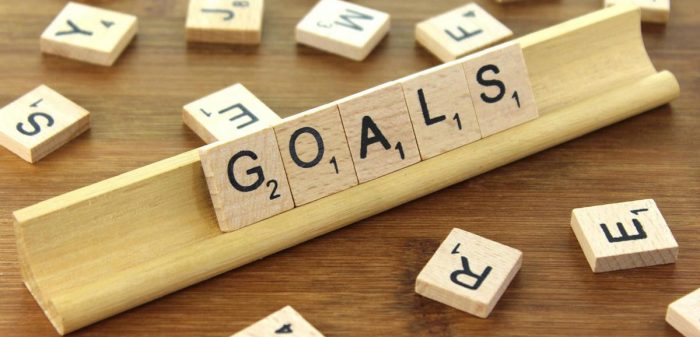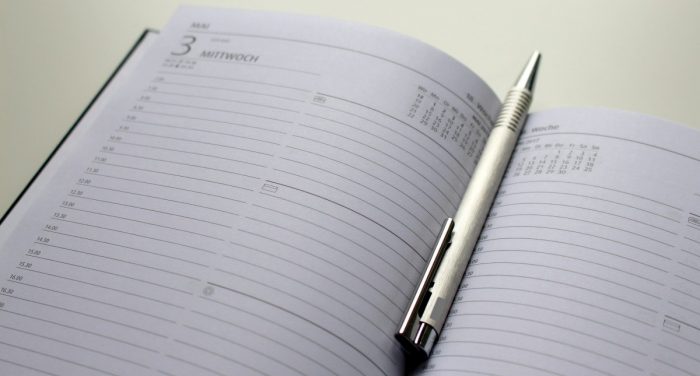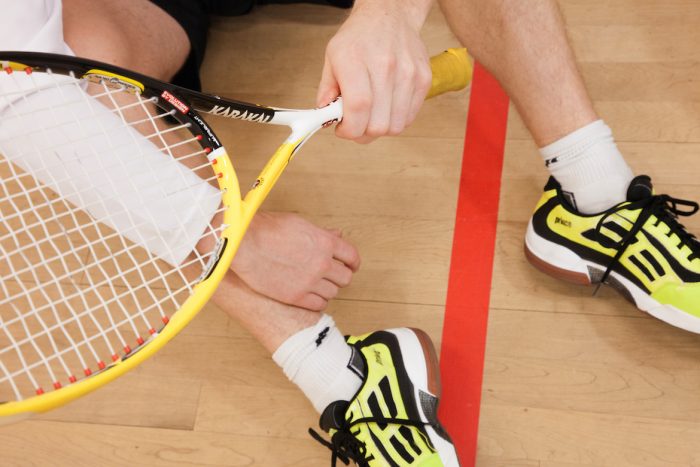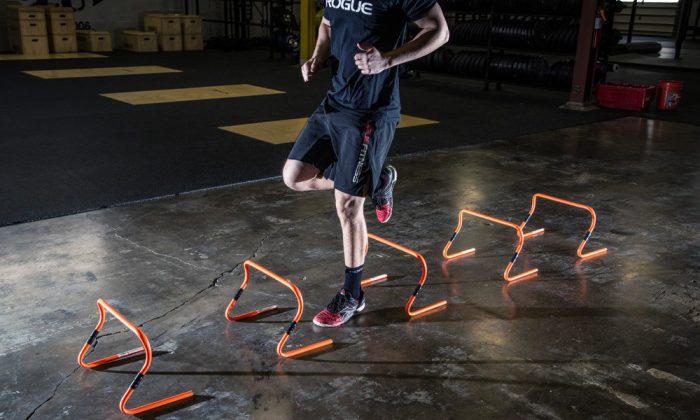We’ve already been treated to some outstanding early season matches on the PSA tour in China, France, and Hong Kong. With Autumn creeping in it’s now the turn of dedicated club players up and down the country to start getting back into the swing of things, as club box leagues and county league team squash begin kicking into gear for the new season.
To make sure you’re prepped for the coming season and ready to hit the ground running, check out our 5 point pre-season checklist:
 1. SET SOME GOALS
1. SET SOME GOALS
With bodies and minds refreshed and optimism high for the new season, now is a great time to think about what your aims and targets are for the coming months, and set yourself some goals.
Think about players you’re aiming to beat this season for example, or maybe even just to win a game off of for the first time. League players can think also about their win ratios from last season, and how much they can improve upon it this year. You may want to set goals related to your tactics in your games such as ‘attacking more on the backhand’, or if you can get a colleague to help count and record stats on occasion, you could maybe look at something like ‘keeping your unforced error count below 3’ in every game.
Whatever the goals are that you set, make them personal and specific to you. Having goals and achievement targets laid out and written down, can be a great way to enhance motivation and really help focus you over the season ahead. Now is also a great time to start keeping a training diary, to really help you keep track of your progress toward your targets over the course of the season.
2. PLAN YOUR SCHEDULE

For many people, work, family, and social concerns will frequently have to take priority over squash. If you’re playing league squash however, try and sit down in advance of the season and take a look at your fixture list and think about whether it might be possible to lighten your load on match days.
A lot of county leagues now run on the same night every week, so consider whether you might be able to organise to have that night freed up by prior arrangement with family or work colleagues. There’s nothing worse than having all your hard training undone by turning up rushed and stressed for a big-league game 5 minutes before you’re due to play, because you’ve been stuck in traffic from picking the kids up, or your train journey home has taken forever due to being stuck at your desk late.
Similarly, if you’re primarily a box league or social player, try and work out in advance which night of the week works best for you to play, and then try and set your more challenging games up for that same night each week.
Think also about your preparation the day or two before big games. Control the controllable – try and get a good night’s sleep the night before, make sure you have a good quality lunch in the afternoon, and drink plenty of water throughout the day to ensure you’re well-hydrated. Controlling all these little things can really to enable you to come to your matches in the best possible condition.
 3. CHECK YOUR EQUIPMENT
3. CHECK YOUR EQUIPMENT
Rackets and shoes are the tools of the trade-in squash, so make sure you have everything prepped and ready for the season ahead.
It can take a couple of weeks to get fully comfortable with a new racket, with different weights, balances, and shapes all affecting the feel. If you’re going to splash out on a new model, make sure you give yourself a period of adjustment to practice and familiarise yourself with it, as opposed to just turning up for your first match of the season with it still in its wrapping!
If you’re sticking with an existing racket, now is also a good time to check your strings – before the season starts is a good time to get your racket restrung, as opposed to waiting for it to reach its very last legs and snap on you mid-match. A lot of players will only ever get their rackets restrung once the strings actually break from accumulated wear, but it is recommended to actually change your strings periodically before this happens as old strings will gradually lose their tension, elasticity, and feel over time.
It’s also a good idea to have a back-up racket of the same make/brand so that if the frame or strings on one of them goes you’re not having to scramble around and borrow an unfamiliar model from someone else before (or during!) a big match.
Think also about your court shoes – probably the most important bit of kit you’ll own.
The wrong racket may affect your play, the wrong shoes can affect your body – potentially causing injury. Find a pair that fits best your particular foot, that feel appropriately shaped and cushioned for what you’re most comfortable in, and then wear them around the house for a few days to break them in. Whilst ordering online is extremely prevalent now, buying shoes is still one thing that is almost certainly best done in person.
Take the time also to check the grips on your rackets and the general condition of your other bits of kit and clothing – pre-season is always a good time to update your wardrobe!
4. PROTECT YOUR BODY

Getting your body back into the swing of things for the new season can take a little time. While some players will have kept up their playing schedule over the summer or at least partaken in a bit of pre-season training, a lot of players will be going back into a more regular playing schedule having not logged much court time over the past few months.
It is always recommended to build yourself up gradually in preparation for an increased physical workload, not least when going into a new squash season – the old adage of ‘Get fit to play squash, don’t play squash to get fit’ is pretty apt here. If you haven’t played much over recent time and are now going straight back into a full box league/team match schedule, make sure you listen to your body and take appropriate breaks from the game when you need it.
‘Listen to your body’ is actually pretty sage advice for all squash players, regardless of level. Squash is such an intense, physical game, we need to make sure that we rest and recover appropriately, particularly after tough games or training sessions. Pain is usually a sign of something being wrong, not a badge to be worn as a symbol of a great game/session – trying to be a warrior and push through every niggle and strain will eventually lead to an accumulation of injuries, that will inevitably FORCE you to have to stop and rest.
Thinking now before the season begins about how you might be able to go about adding in some additional controlled, carefully structured conditioning training to your week, can really help reinforce your body and aid in staving off the ravages of injury over a long season.
Think about whether over the course of the season you can add in 1 or 2 fitness sessions to your week, getting in the gym or on court for some squash-specific conditioning training. If this means having to maybe cut out one hitting session each week then so be it – if you’re endeavouring to play at the very best level that you possibly can, then you need to train appropriately. You only have to look at the top pros for guidance – most will spend not far off a 50/50 split between hitting and conditioning training.
5. OPTIMISE YOUR GAME
So goal-setting, schedule planning, equipment, and conditioning training should all be high on your checklist of things to address ready for the new season – and we’re here help you with all this and much, much more every step of the way at SquashSkills.
Whether it’s in-depth technique breakdowns, advanced tactical and strategy plans, comprehensive training programmes, or just a general deeper insight into the game, we’ve got you covered.
Gary Nisbet
B.Sc.(Hons), CSCS, NSCA-CPT, Dip. FTST
SquashSkills Fitness & Performance Director
Sign up to the SquashSkills newsletter
Get world class coaching tips, straight to your inbox!